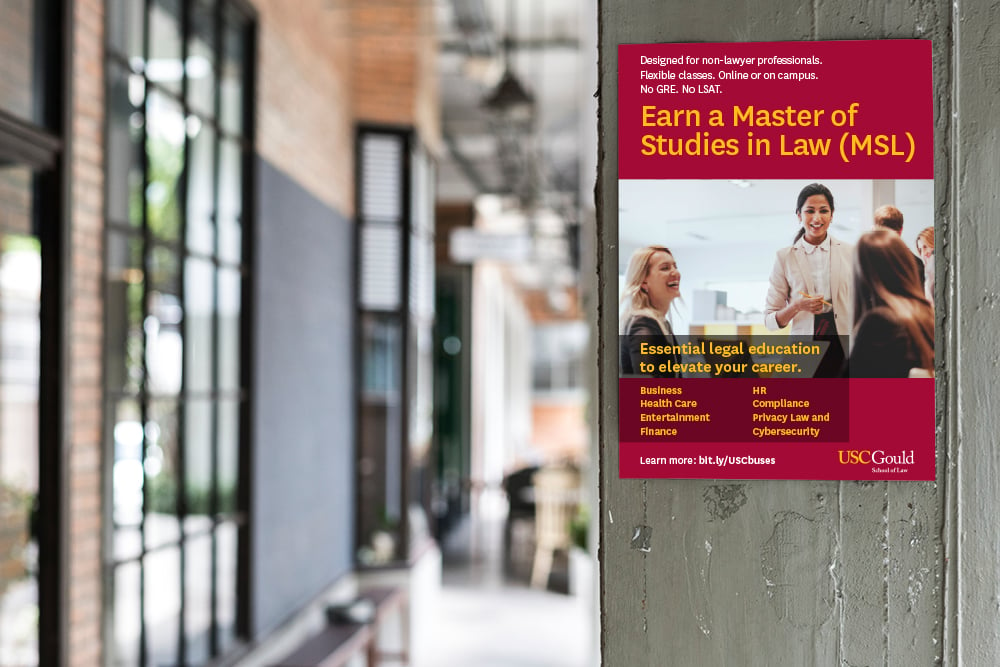MARKETING SOLUTIONS
For marketing directors struggling with how to increase enrollment, successfully recruiting students is often a real challenge. Institutions of higher education face competition from over 5,000 colleges and universities located throughout the United States. Meanwhile, choosing marketing tactics that are right for your school, reach your intended audience, fit your budget and deliver the results you’re looking for can feel like shooting arrows at a target while wearing a blindfold.
Learn more about the current state of higher ed enrollment.
Use predictions about the future of higher ed to plan your long-term marketing strategy.
Learn how to increase college enrollment with advertising.
Discover seven marketing strategies to increase graduate program enrollment.
|
Benefit from our expertise as we share tactics that are proven to: |
|
Our Student Recruitment Marketing Strategy Has 3 Pillars
- DISCOVER your marketing goals, identify your target market persona, and explore the best marketing tactics for the job at hand.
- CREATE a holistic plan that includes the right mix of paid advertising (both digital and traditional) and earned, owned, and shared media.
- EXECUTE your campaign, track your results, and refine as necessary for optimal results.
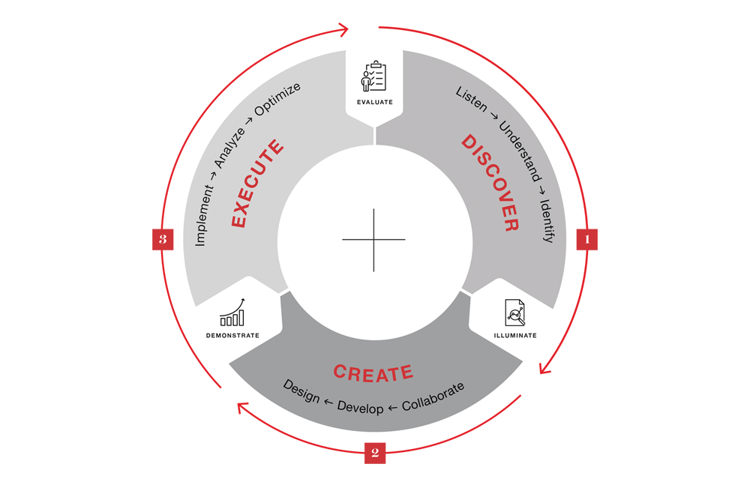
Learn what an effective student recruitment campaign consists of in today’s competitive marketplace.
+ DISCOVER
Research or understanding (ie. discovery), and the subsequent analysis, is the beginning stage of any successful marketing campaign. Our team begins new projects by conducting quantitative market research to deliver insights on the actions needed to increase awareness among the client’s targeted audience. By designing, executing, and analyzing consumer surveys, our research team identifies consumer attitudes and usage behaviors towards, and the effectiveness of, the resources currently offered by the client. This initial phase of understanding serves as our roadmap for success. As Dan Zarella says, “marketing without market research is like driving with your eyes closed.”
Begin By Identifying Your Target Market Buyer Persona
The first step in creating a successful enrollment campaign is identifying a buyer’s persona for your target audience. After all, the best way to successfully engage with any audience is to understand who they are and what they want.
Learn how to identify your target audience.
To drive user engagement further and faster, you must explore the things that make them tick:
- PERSONAL BACKGROUND - Demographics / Education / Career Path
- THEIR ROLE - Responsibilities / Typical Day / Knowledge / Skills / Tools
- THEIR CHALLENGES - Areas to Improve / Pitfalls
- THEIR GOALS - Objectives / Identify Success
- HOW THEY LEARN - Participation / Interaction
- SHOPPING PREFERENCES - Exposure / Visibility / How Do They Search
Our Identifying Your Buyers Persona Worksheet will help guide you through this process.

When recruiting students, it’s important to keep in mind that your target audience is composed almost entirely of millennials and members of Gen Z.
This sector of the population, born after 1981, differs from older generations in several ways. These unique characteristics will impact the efficacy of your marketing tactics.
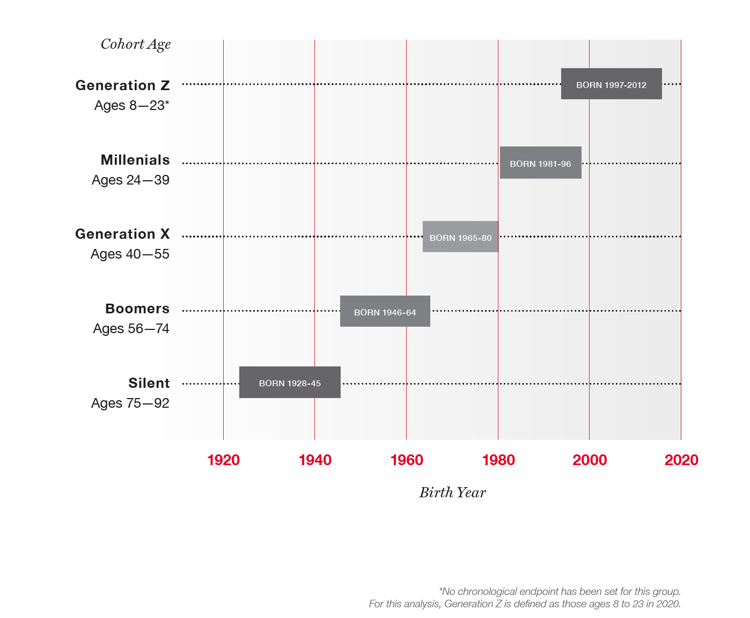
- Generation Z and millennial audiences tend to be less receptive to "standard" advertising tricks than their parents and grandparents.
- These younger generations value authenticity far more than previous generations, especially in their ads.
- Millennials and Gen Z-ers look for connection - moments that they can discover and share. In fact, 79% of millennials believe that participating in events helps them connect better with their friends, communities and the world at large.
Explore effective ways to reach younger students.
Discover three reasons to target adult learners too.
Learn eight ways to target adult learners.
Learn higher ed marketing strategies to attract returning adult students.
Explore the pros and cons of international student recruitment.
For effective college recruitment, you need to know how your target market typically consumes content.
Millennials and members of Gen Z are digital natives. They’re typically very active on all social media platforms and are on top of digital trends. Gone are the ways of older generations who used phones sparingly. It’s no secret that teenagers and young adults spend a lot of time on their phones, particularly on social media platforms.
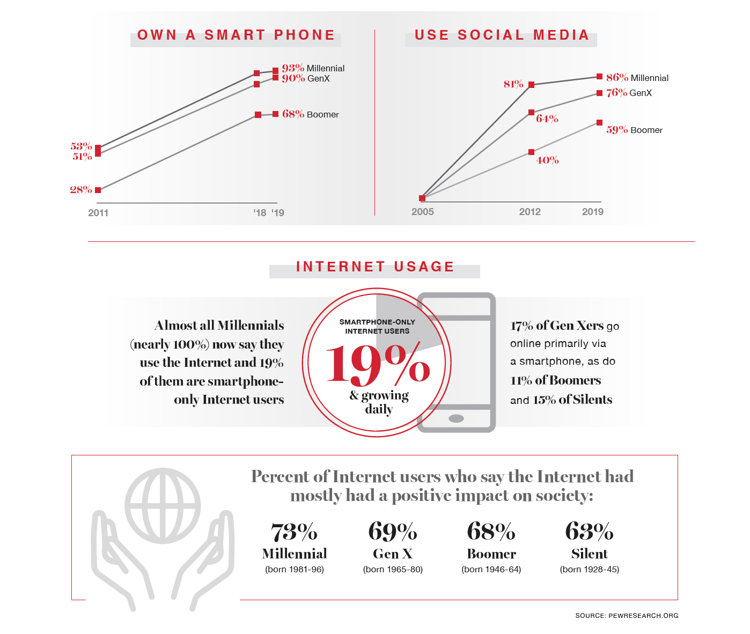
Develop a mobile first student recruitment campaign.
Next Define Your Enrollment Campaign Goals
In addition to understanding how to identify your target market persona, you should know that well-defined marketing goals are essential for effective advertising. But how do college marketing directors establish goals that will enable them to run successful enrollment campaigns? Here’s our three stage goal-setting process:
#1 Develop Your Enrollment Campaign Goals
To begin the process of uncovering your marketing goals, ask yourself these four questions:
- How would you describe your school or program to someone who has no knowledge of its existence?
- If your ideal student applicant came away with just two thoughts about your school or program, what would you want them to be?
- What are your favorite things about your school or program? What sets it apart from other schools or programs?
- What style do you envision representing your school or program? What adjectives do you hope to communicate?

#2 Establish Your Enrollment Campaign Goals
The second step in defining winning marketing goals for student recruitment is to create crystal-clear objectives with a systematic process called S.M.A.R.T goals. S.M.A.R.T. principles are Specific, Measurable, Attainable, Relevant and Time-Bound. Let us walk you through S.M.A.R.T. goal refinement.
S - Specific
Drill down into your goals. What are you looking to accomplish with your marketing? Be exacting with a specific purpose. Your purpose could be as simple as "from this effort we want to receive 25 completed applications.
M - Measurable
How will you measure the results of your enrollment campaign? What tools do you have in place? As the old cliché says, “what gets measured gets done.” By creating specific goals and ensuring you have tools to measure your results, you know what success will look like.
A - Attainable
As you are establishing your marketing goals, you must be realistic. For example, if you have an average of 100 monthly website visitors, you should not expect to multiply that by 100x overnight. Set realistic goals and benchmarks so that you can attain the goals you are establishing.
R - Relevant
Relevancy is another key factor that cannot be overlooked. Make sure your goals are in line with what you can measure. For example, if you are looking for application completions, make sure you allow for application form completions to be tracked through the conversion tracking methods you have set up on your site. If you do not, pick another measure or put the appropriate tool in place.
T - Time-bound
Establishing deadlines for accomplishing your goals is equally important. A timeline will help you and your team visualize your destination clearly and ensure that you know when you need to arrive. Just remember, real results take time.
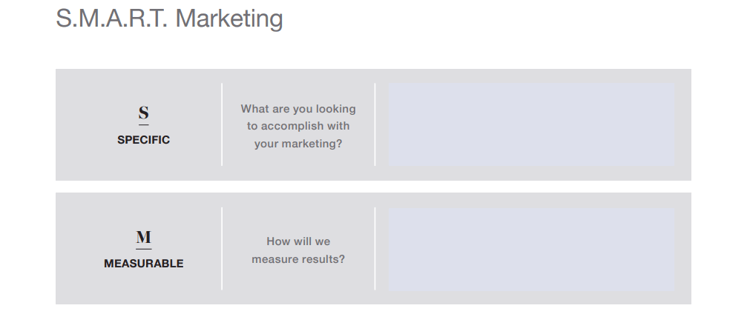
#3 Refine Your Enrollment Campaign Goals
In addition to establishing S.M.A.R.T. goals, we have one more exercise to get you closer to setting those crystal-clear marketing goals: the Journey to Change principles. The Journey to Change process will drill deeper into your college recruitment marketing strategy and the steps you need to take to reach your goals. Let’s get started.
Define the Problem.
- Examine your existing marketing strategy or lack there-of.
- What is working?
- What is not working?
- Strengths? Weakness?
- How do you measure up to your competitors in the market?
Define the Desired Outcome.
- What are your goals?
- Awareness: Are you looking to amplify awareness of your school or program in the market?
- Considerations: Are you looking to win over (features and benefits) student applicants who know what they want?
- Conversions: Are you looking for engagements (applications)?
- How much is your outcome worth? (For example, each student enrolled full-time might equal an additional $20,000 of revenue for your school.)
Outline Actions to Attain Goals.
- What steps are you taking to reach your goals? Paid digital campaign, print campaign, and so on?
- How much are you investing to attain these goals?
- What is your time commitment?
What are the Criteria for Success?
- Are you looking to attain specific results? This might be a specific number of website visitors, student application form fill-outs, or social media followers.
- Put an amount to your success criteria based on the data you currently have on hand. Every successful marketing plan needs a North Star. Define your North Star so that your marketing team can surround that goal and make it happen.

Finally, Identify the Marketing Channels and Assets That Are Right For You
The PESO model is a framework for integrating paid, earned, shared, and owned media to create a successful holistic marketing strategy. Apply our Discover. Create. Execute. process in combination with our PESO Infographic to:
- Identify the marketing channels and assets you already have in place and those you need to add and/or amplify.
- Plan a marketing campaign that includes an effective mix of paid, earned, owned, and shared media.
- Execute an effective and efficient marketing campaign.
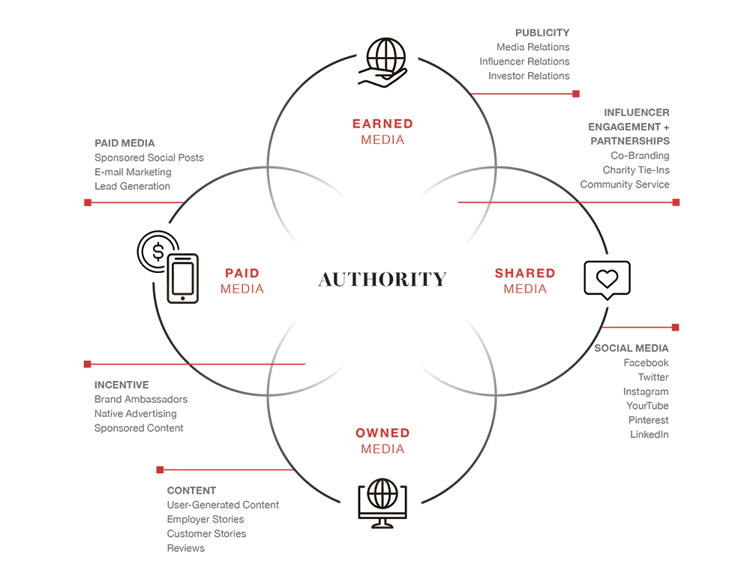
Choose the best paid advertising venues for your college, university, or higher education program.
+ CREATE
Armed with actionable insights, our team begins the process of developing messaging and creative treatments. In our view, marketing, social media, and public relations are tactics in service of a larger strategic business goal. We begin by understanding each client’s ultimate measure of success and then layer in social media, marketing, and public relations plans that promote the outcomes each client is seeking in measurable ways. To achieve those ends, we create a full-funnel holistic marketing campaign with crystal-clear goals, a well-defined target audience, and a thorough understanding of the methods required to achieve results. Ultimately, we design an actionable plan for implementation.
A full funnel higher education marketing strategy incorporates traditional campus advertising, digital marketing and public relations
By combining tactics from these three marketing arenas, you can extend your reach while each part of your marketing campaign amplifies the efforts of the others. This holistic view incorporates appropriate combinations of display, video, search, social, earned media, influencer marketing and promotional events to produce the outcomes you're looking for.
Learn how to increase enrollment with an integrated marketing strategy.
Digital Marketing is an essential part of any college recruitment campaign
The umbrella term “digital marketing” encompasses an enormous range of tactics and new media assets. Everything from digital higher education advertising to your website and social media channels falls under this category. Email marketing, online brochures and content marketing have their place as well.
The world of digital marketing can be overwhelming. Experienced recruiters may be tempted to focus the majority of their efforts and budget elsewhere. However, this ever-expanding sector is key to recruiting students in today’s crowded market.
Online, email and text marketing reach millennials and Gen Z exactly where they’re spending the majority of their time – on their smartphones. Through these channels you can amplify your branding efforts, extend your marketing reach and build deeper relationships with your target audience.
But where should you focus your digital marketing activity? It’s important to choose the channels that best fit your needs and are proven to deliver real results. For recruiters wondering how to increase enrollment in today’s market, paid digital ad campaigns are an excellent way to optimize your ROI.
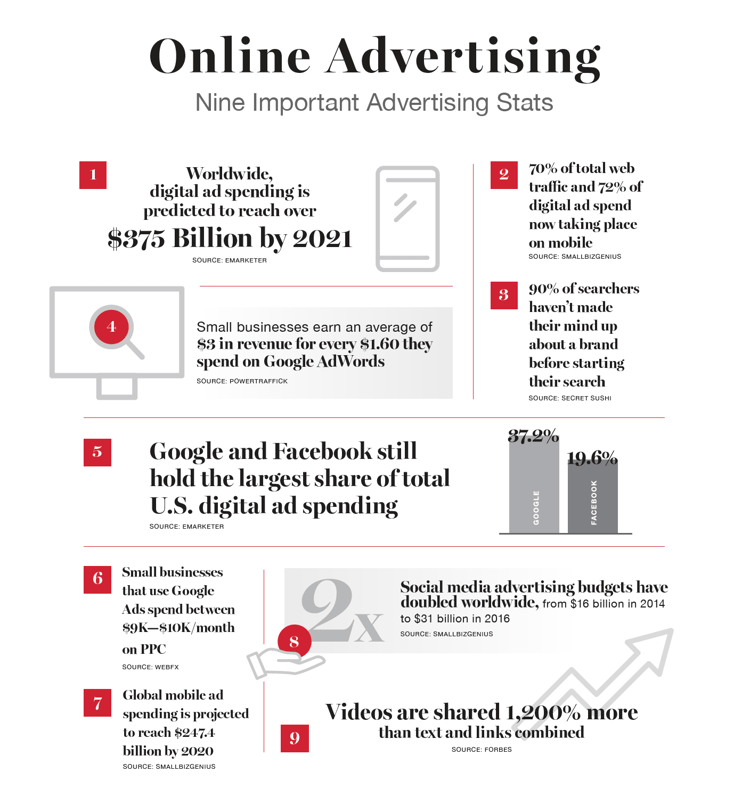
Digital advertising campaigns can incorporate several different tactics.
These might include paid and organic search advertising, paid display advertising, social advertising, and mobile advertising.
DIGITAL ADVERTISING TACTICS
+ ORGANIC
+ PAID
+ SOCIAL
+ MOBILE
SEARCH ADVERTISING
Text only search advertising can be paid or organic. Pay-per-click (PPC) is a model of internet marketing in which advertisers pay a fee each time one of their ads is clicked. It’s a way of buying visits to your site, rather than attempting to “earn” those visits organically.
Search engine advertising is one of the most popular forms of PPC. It allows advertisers to bid for ad placement in a search engine's sponsored links. These links appear when someone searches for a keyword that is related to the advertiser’s business offering. For every click sending a visitor to the advertiser’s website, the advertiser will pay the search engine a small fee.
Organic search advertising involves the creation of website content that will appear naturally in search engine results when users search for related topics. There are many factors that contribute to achieving and maintaining optimal search engine rankings.
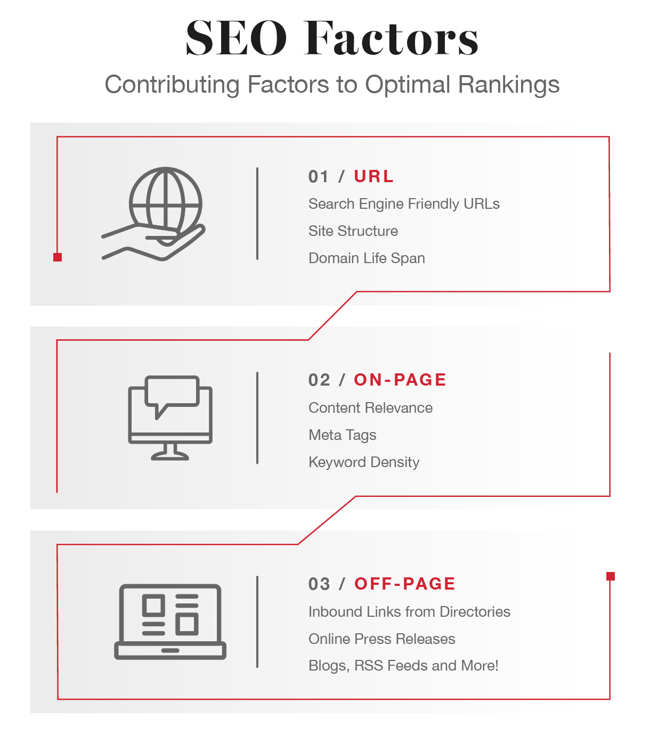
DISPLAY ADVERTISING
PPC display advertising campaigns utilize static images, GIFs, or video and are a great way to boost your business. These paid online ad campaigns can re-engage users that have visited your website and help build brand awareness.
SOCIAL ADVERTISING
Social media advertising campaigns are an excellent way to generate leads and build brand awareness in its simplest form. These paid online campaigns establish loyalty and engage users.
Discover five winning social media marketing strategies to increase college enrollment.
See our Marketing Toolkit for more information on paid social advertising - your first step towards better audience targeting and bumping up your ROI. Ever wonder what's a good cost per click for Facebook ads? Our Marketing Toolkit can help you sort that out too.
IN-APP MOBILE TARGETING
This type of precision advertising uses mobile location services to reach consumers in real time when they’re near a point of interest, such as a university, store, or office. Location specific geo-targeted advertisements (or local PPC) ensures that the impressions you’re paying for reach the candidates you’re pursuing.
Use location targeting to increase college enrollment.
Here are some statistics that support the benefits of PPC advertising for any student recruitment campaign.
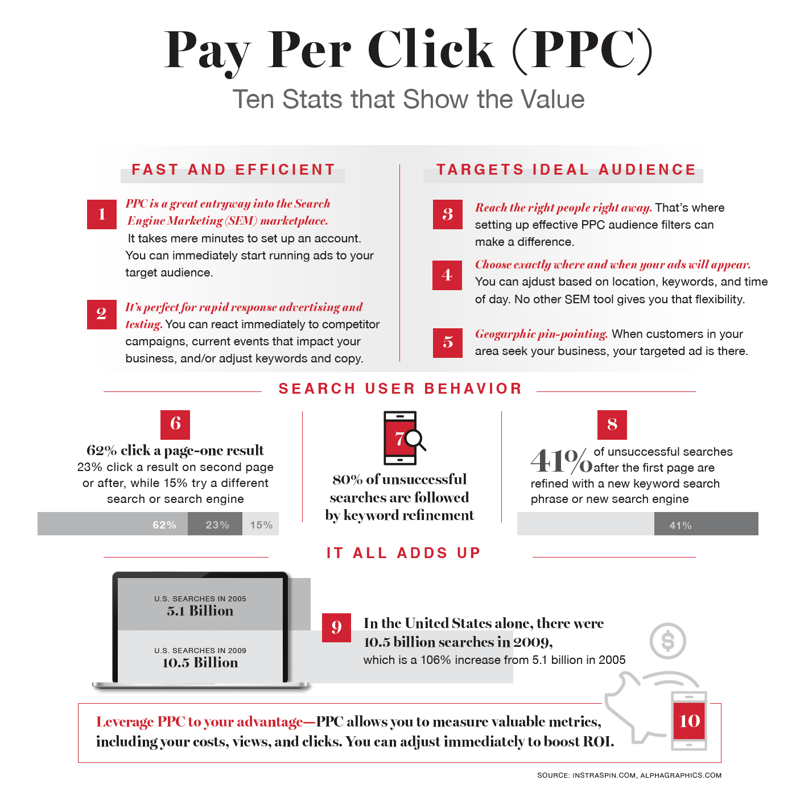
A number of factors determine how successful your PPC advertising campaign will be.
When PPC is working correctly, the per-click fee is trivial, because the visit is worth more than what you pay for it. A lot goes into building a winning PPC campaign, everything from researching and selecting the right keywords, to arranging keywords into well-organized campaigns and ad groups, to setting up PPC landing pages that are optimized for conversions.
While a number of factors determine how successful your PPC advertising campaign will be, you can achieve a lot by focusing on:
- Keyword Relevance - Crafting relevant PPC keyword lists, tight keyword groups, and proper ad text.
- Landing Page Quality - Creating optimized landing pages with persuasive, relevant content and a clear call-to-action, tailored to specific search queries.
- Quality Score - Rating high on Google for the quality and relevance of your keywords, landing pages, and PPC campaigns. Advertisers with better Quality Scores get more ad clicks at lower costs.
- Creative Copy - Enticing ad copy is vital; and if you're advertising on the display network, you can use a tool like our free Smart Ads Creator to create designer-quality ads that will demand clicks.

|
Today’s best digital channels for Higher Education advertising: |
|
|
|
+ Influencer partnerships and content strategy can also have a place to play in a successful campaign |
See three key digital marketing solutions for increasing student enrollment.
Traditional Campus Advertising delivers enrollment campaign results and more
Whether you’re trying to attract community college students to your four-year campus or recruiting existing students for advanced education programs, specific degree programs or wellness services, effective campus advertising helps you meet your recruitment goals.
Targeting your advertising efforts geographically is a smart move. College campuses concentrate your target audience in a small area as students live, eat, socialize and learn within a few square miles. Build your brand voice and capture revenue through strategically placed outdoor and transit advertising, print advertisements, chalk art and graffiti.
OUTDOOR & TRANSIT ADVERTISING
Whether delivered via billboard, signs or screens, out-of-home (OOH) media and transit advertising generate repeated exposure, delivering your message over and over again. The visual impact delivers more bang for your buck.
PRINT ADVERTISING
Build rapid exposure within a targeted area with postering. Available when larger advertising formats aren’t, posters can be placed in shopping centers, bookstores, cafes, breezeways and public buildings. High frequency repeat exposure produces real results.
Campus newspaper ads are another way to reach your target market on budget, with precision, quickly and effectively.
CHALK ART & GRAFFITI
Sidewalk art, chalk art, stenciling, clean graffiti and graffiti walls allow you to reach your audience in fun, surprising and unique ways that leave a lasting impression. Sidewalks offer a canvas for marketing your brand and promoting events in an artistic style that resonates with young adults.
Created by writing a message on a dirty sidewalk using pressured water and a stencil, clean graffiti has particular relevance for millennials and Gen Z. This environmentally friendly form of outdoor media creates a buzz and positions your institution as an innovative beacon of social responsibility.
See our top five campus advertising strategies for college recruitment.
To create ads that will catch prospective students’ attention and drive them to take action, you need clean, creative, and research-based design and copy. Everything from the colors and fonts you choose to the words and images you use can affect the success of your advertising campaign.
Learn what makes for a winning college recruitment ad.
Public Relations efforts fuel university branding campaigns
The public image that you create and promote for your school is vital to recruiting students. When your reputation both reaches and speaks directly to your target audience, you will generate meaningful results and move your KPI’s forward.
Effective ways for colleges to build their brands include earning media coverage, engaging in influencer marketing and taking part in successful promotional events. Hosting campus open houses and participating in post-secondary informational events at high schools can be particularly helpful in recruiting students.
Learn more about how to attract college students with PR campaigns and increase enrollment.
Marketing Best Practices Drive Student Recruitment.
We’ve explored the importance of fully identifying your target market, developing definite marketing goals, and creating an integrated marketing strategy by utilizing an appropriate mix of assets and approaches. Now it’s time to dive into some other marketing best practices that will significantly increase your success when it comes to recruiting college students.
Best Practice #1: Full Funnel Marketing
To effectively motivate your target audience to act, it’s important to understand their journey from the top of the funnel (awareness), through the middle (consideration), to the bottom (decision/action).

Best Practice #2: Data Driven Goals
As you define your marketing goals, utilize the data you have on hand to look at where you’ve been and determine what a successful higher education advertising campaign will look like for you.
- Identify company revenue goals
- Identify conversions required to attain revenue goals
- Calculate past closing rates
- Identify how many Sales Qualified Leads are required (SQL’s)
- Identify how many Marketing Qualified Leads are required (MQL’s)
- Calculate the number of website visitors required
- Divide your website traffic marketing goals into phases
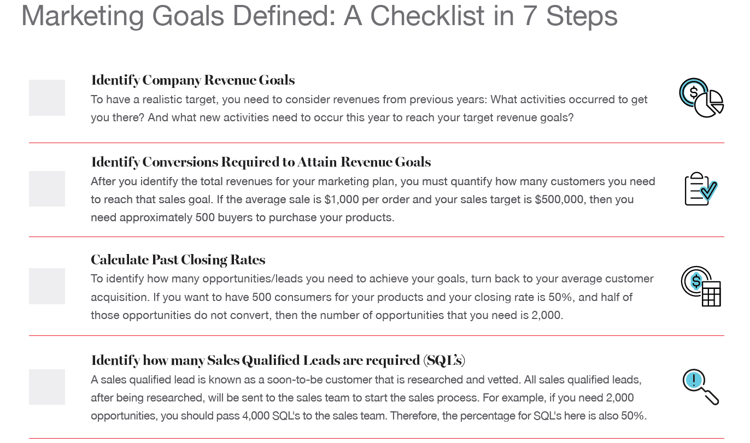
Best Practice #3: Dos and Don'ts
Now that you’ve seen what can be accomplished with a properly designed college recruitment strategy, we hope you’re feeling excited and equipped to get started. Here are a few last notes on marketing best practices to see you on your way:
DO Focus On Your Customer’s Needs
Your marketing strategy must focus on your target audience’s needs and not just on your service or your product. This is the golden rule of marketing. Hone in on how your ideal applicant can best benefit from what you are offering because your school or college is here to fulfill their needs and to provide them with a solution to their problems. This will create brand loyalty and increase student engagement.
DO Implement a Strong Social Media Strategy
It is essential to have a strong social media presence and strategy. Focus on three main purposes: engagement, scheduling and reporting. Each social media site serves a distinct purpose and your program needs to know how to utilize each of these platforms.
DO Make Marketing Campaigns Mobile Friendly
This is the virtual era— many people spend a lot of their idle time on their phones. Mobile devices are smaller, lighter and more convenient than computers. It is important that marketing directors know how to optimize their university branding campaigns for a mobile setting and make the mobile shopping experience as easy and seamless as possible.
DON'T Forget to Study Your Market
A strong understanding of your industry, competition and demographics is vital. Knowing who and what performs well and why will inevitably influence the marketing strategy. Have a comprehensive understanding of your own product or service, and then make sure to be able to communicate that information in clear, simple terms to consumers. Know what is already available in the market, stay in the know of current trends and don’t coast with the status quo.
DON'T Misuse Multimedia
Videos are a key marketing tool and are rapidly growing in popularity. With video, your marketing message can be effectively conveyed to a wide audience faster than ever before. Four times as many people would prefer to watch a product or informational video than read about it, so using videos in your marketing campaign is probably the easiest way to capture consumers. Videos can demonstrate how products work, the process of a specific service, or even discuss the brand’s identity.
DON'T Forget Other Marketing Tactics
Successful marketing requires a solid understanding of what catches the attention of your ideal customers. It is important to include a mix of marketing tactics, such as e-mail marketing and influencer relationships.
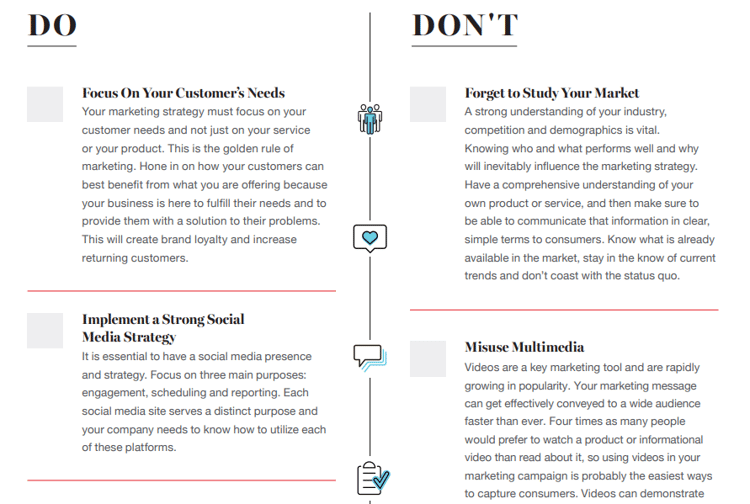
+ EXECUTE
As discussed earlier, our holistic approach for delivering relevant and impressionable media coverage with target audiences firmly in mind is designed around the PESO model, incorporating paid, earned, shared, and owned media into client campaigns to deliver real and meaningful results. We also refer to this as the “layering effect,” as each marketing tactic amplifies our client’s message and expands their reach. This allows us to execute a marketing campaign full of content that is customized and effective, allowing us to deliver it where consumers are searching for it, both offline and on.
5 Innovative Ways to Execute an Effective College Recruitment Campaign
When it comes to student recruitment, innovation is especially important. Your target audience is young, modern, and not likely to be attracted to stale advertising efforts and old school campaigns. For this demographic, cutting edge marketing strategies can be incredibly potent.
Here are five innovative ways to execute an effective college recruitment campaign:
1. Use emerging social media platforms.
While established social media platforms like Facebook and Twitter still have plenty of traffic, teenagers and young adults are increasingly turning to emerging platforms like Snapchat and TikTok. In fact, the most popular social media sites among teenagers in 2020 were Snapchat, TikTok, and Instagram (in that order). And (as we’ve already discussed) to reach your target audience, you need a presence precisely where members of that market are spending their time.
Here are a few facts to keep in mind when it comes to Snapchat in particular:
- Snapchat ads are 7x more efficient than TV ads at reaching Gen Z.
- 72% of Snapchat ad viewers weren’t even reachable by TV ads.
- 38% of Snapchat users aren't on Instagram.
Emerging Media Platform Use IRL
The University of Florida’s #FirstDayUF social media campaign made excellent use of an emerging platform when they posted a video of the school president handing out free shaved ice on the first day of school. Students were encouraged to share the hashtagged video on TikTok and other social media accounts, building community and bringing broader awareness to their campus.
2. Create an app for incoming students.
As mentioned earlier, more and more people are spending a large portion of their day on their mobile devices. This is particularly true of teens and young adults. In fact, 80.6 million users in the United States accessed the internet exclusively via mobile devices in 2020. By developing your own mobile app, you can easily reach your target audience almost anytime and anywhere.
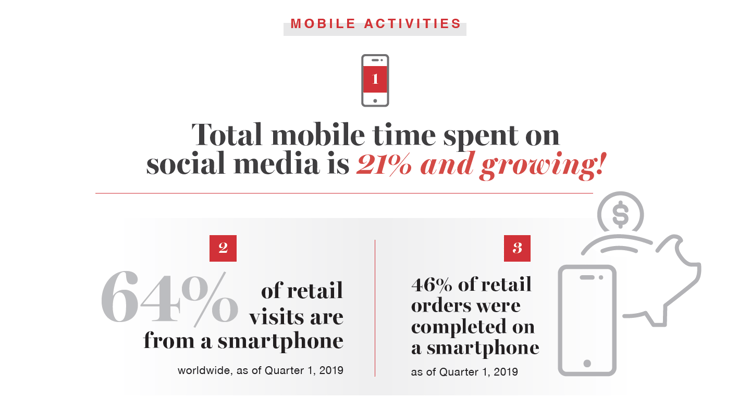
Mobile app implementation also allows you to offer prospective students the personalized experience they’ve grown to expect in almost every aspect of their lives. Provide services including:
- Custom pathways
- Straightforward opportunities for digital interaction with other prospects, current students, professors and administrators
- Up-to-date information on news, events, registration deadlines and more
Furthermore, in a mobile environment you can incorporate features like GPS, push notifications, and a built-in camera into your branded app. These elements allow you to do things like easily facilitate self-guided campus tours and encourage users to share photos of their experience, all while showcasing your school’s unique visual brand.
3. Implement a chatbot on your website
In case you haven’t yet encountered them personally, chatbots are a specific type of application, used to streamline the customer service experience. Generally, chatbots use messenger apps to carry on conversations with customers. They can cut down on lengthy hold times, provide quick and accurate replies to customer queries, and engage customers through targeted marketing campaigns, all while saving companies the expense of hiring additional staff.
For colleges and programs associated with higher education, chatbots can quickly and easily provide prospective applicants with a vast array of information as well as make suggestions regarding services and events that may interest the target audience.
4. Video! (Recreate in-person events in a virtual space.)
In today’s ever changing and increasingly digital world, virtual events and video marketing are key. Spread your reach farther and capture your audience’s attention more fully with video. Apply this digital marketing tactic to:
- Campus tours
- Speaking events
- Open houses/info sessions
- Portrayals of campus life (involve current students for energy and authenticity)
5. Utilize campus influencers.
Influencer marketing is an effective PR tactic that allows universities to build and share their public image with large segments of their target market. Mentions and shares on sites like Twitter, YouTube, Facebook, Instagram, Tumblr, TikTok and Linked-In reach millions of viewers. Whether individuals share your content with their peers or high-profile influences speak favorably of your organization, you gain exposure, build positive brand awareness, and engage more of your target audience.
In addition to cultivating relationships with bloggers, reporters, consumer advocates and industry experts, you will want to enhance your relationships with existing students and distinguished alumni and faculty members. Having credible sources like these share and promote your programs and events with enthusiasm will speak volumes to prospective enrollees and their families.
Looking for another way to level up your student recruitment campaign? Learn about recruiting college students by targeting their parents (why and how).
See Successful Full-Funnel Integrated Marketing Campaigns In Action
+ MSSmedia CLIENT SHOWCASE
Florida State University Higher Education Targeting Campaign
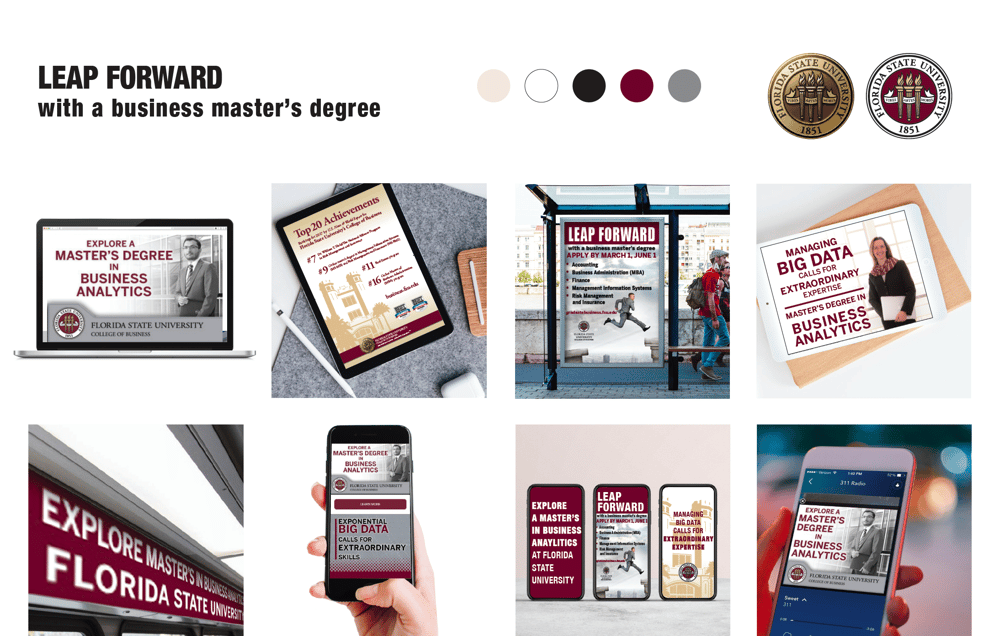
OBJECTIVE: Florida State University College of Business was looking to drive additional traffic to the website and increase applications to their Masters of Business Analytics Program.
EXECUTED:
- Campaign Positioning
- Posters
- Campus Out-of-Home
- Mobile Marketing
STRATEGY: To deliver on awareness and enrollment goals, MSSmedia devised a full-funnel digital and campus marketing strategy. Using branding and engagement as key objectives for the campaign, we utilized both campus outdoor signage and digital, location specific geo-targeted advertisements.
RESULTS: 1M+ Impressions Delivered
+ MSSmedia CLIENT SHOWCASE
Johns Hopkins University Higher Education Marketing Campaign

OBJECTIVE: Johns Hopkins University School of Engineering wanted to create awareness of their online Biomedical Engineering course for high school students, as well as increase applications for enrollment in this course.
STRATEGY: To deliver on their goals, we created a digital campaign to build awareness (reach) and drive enrollment (leads) amongst a targeted audience of high school students, as well as their parents. We also recommended a paid social media campaign strategy incorporating both a brand awareness campaign and a lead generation campaign to drive measurable results, targeting both high school students and parents.
EXECUTED:
- Digital Advertising
- Campus Marketing
- Social Advertising
- Mobile Marketing
RESULTS: Johns Hopkins University’s campaign success was evident by the vast volume of website traffic and lead forms completed.
See more successful student recruitment marketing campaigns.
The 7 Deadly Sins of Marketing (aka What Not To Do When Recruiting Students)
Are your student recruitment marketing efforts failing? Do you need more leads, increased numbers of qualified applicants, and better enrollment numbers? Are you looking for better bang for your advertising buck? Avoid the seven deadly sins of student recruitment campaigns, employ truly effective advertising strategies, and you will achieve the enrollment results you’ve been seeking.
- Not establishing marketing goals
- What are your school or program’s revenue goals?
- What are your closing rates?
- What are your conversion rates?
- What are your attrition rates?
- Not knowing your target audience
- Have you done your market research?
- Have you established one or more detailed buyer personas?
- Not establishing a budget for marketing efforts
- Your budget should be based on your overall marketing goals.
- If necessary, break your budget into separate categories – digital efforts, in-person events, and traditional advertising efforts.
- Not having a timeline
- Create campaign milestones to avoid becoming overwhelmed.
- Schedule each stage of the campaign for maximum effect.
- Not knowing your competition
- Who is your direct competitor?
- What are they doing?
- What is your position in the market in comparison?
- Creating a poor online user experience (digital presence)
- Does your website load quickly?
- Is your website mobile friendly?
- Is your website easy to navigate?
- Does your website have clear CTAs (calls to action)?
- Settling for lackluster content & creative
- Are your marketing materials designed to capture your consumer’s attention?
- Do they highlight what makes you special?
- Do they demonstrate how you stand out from your competitors?
- Is your website informative and content-rich?

Measuring your success
To know if your student recruitment efforts have been successful, you must track the results in a way that is measurable. Key performance indicators may include number of website views, in-person or virtual school tours, number of completed applications, cost per lead etc. The measures you use for tracking will depend on your end goals. But whether you’re aiming for increased awareness, consideration or conversions, you will need to have the proper assessment tools in place or work with a partner who can provide this data.
Reporting software can provide information on website traffic, lead form fill outs, application completions and more. Utilizing software with the proper attribution methods in place will also provide necessary data on why/how leads are accessing your site, form, or application.
Measuring and analyzing your campaign data can provide unique insight into your audience, marketing channels, and budget. To optimize your campaign’s effectiveness, you will need to put these insights to work and make a few adjustments along the way. This is easily accomplished by returning to the Discover stage of campaign management. Explore the information you’ve gleaned from your campaign efforts to date, use that data to revise content and tactics as necessary, and then put your enhanced strategy into effect. Proper implementation of this Discover. Create. Execute. cycle will allow you to achieve your aims.
Learn more about how to measure the success of a higher education advertising campaign.
Creating and properly executing an integrated marketing strategy is the key to driving enrollment
The term “marketing” covers a vast array of activities, tactics and tools. Without a detailed plan, your efforts are likely to be scattered, incomplete and ineffective. If you have separate blueprints in place for traditional campus marketing, digital marketing and public relations you stand to dilute the effect of the tactics you employ. Maximize your return on investment by creating a holistic marketing approach optimized to meet your specific needs and goals.
|
We’re here to walk you through each step of the process: |
|
Feeling Overwhelmed?
When you oversee all communications, marketing, message and branding activity for a school, college, or department, you’ve got a lot going on. Sure, you have an assistant or a team, but your plate is full to overflowing each and every day. Enlisting the help of a results driven media and PR agency that understands your unique needs and what motivates your target audience is a sure-fire way to develop a winning strategy. When you find the right partner, you benefit from their expertise. Save time and money while recruiting more students than ever before.
Are higher education digital marketing agencies worth the cost?
Learn more about why you should enlist a media + PR agency when recruiting college students.
See five mistakes to avoid when choosing a higher education marketing agency.

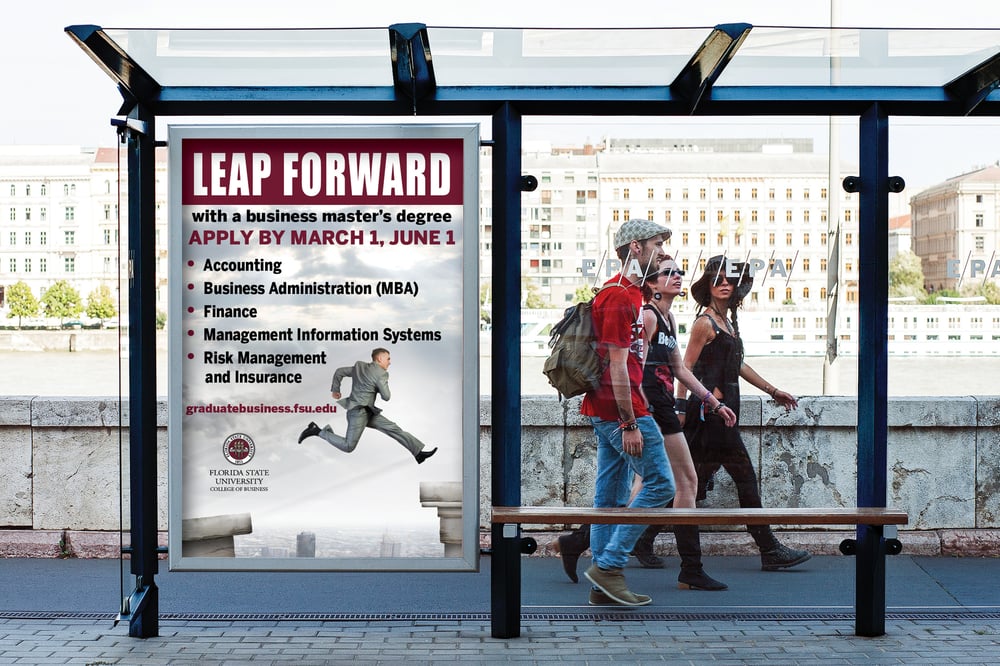

.jpg?width=1000&name=CaseStudies_JHU%20Engineering%20(7).jpg)
